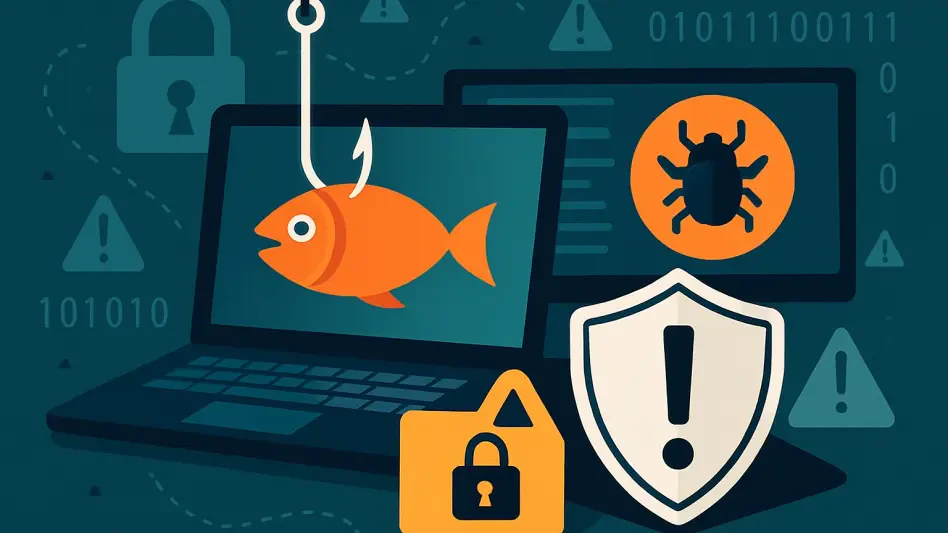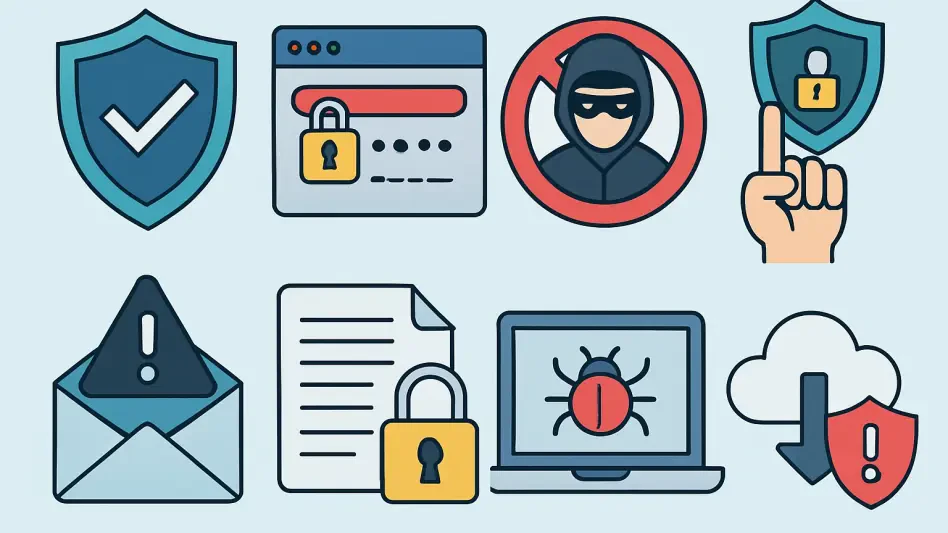Imagine a seemingly harmless email landing in a corporate inbox, claiming a copyright violation tied to a specific company asset and urging immediate action to resolve the issue. This is no ordinary spam; it’s the gateway to a devastating cyber threat known as the Noodlophile Stealer malware. This advanced malicious software has emerged as a significant concern for businesses worldwide, exploiting human trust and technical vulnerabilities with alarming precision. As phishing attacks grow more personalized and deceptive, this malware stands out for its cunning delivery methods and potent data theft capabilities. This review delves into the intricate workings of this threat, analyzing its features, impact, and the challenges it poses to modern cybersecurity defenses.
Evolution of a Deceptive Menace
From Crude Tricks to Targeted Phishing
The tactics behind Noodlophile Stealer have evolved dramatically, shifting from rudimentary lures like fake AI platforms to highly tailored phishing campaigns. These campaigns now often masquerade as copyright infringement notices, embedding specific details such as a company’s Facebook page ID to heighten authenticity. This personalization creates a sense of urgency, compelling recipients to act swiftly without questioning the email’s legitimacy.
Such sophistication marks a departure from generic spam, focusing instead on precision targeting. By crafting messages that appear to come from credible sources, attackers exploit the natural inclination to resolve legal issues promptly. This calculated approach significantly increases the likelihood of victims engaging with malicious content, setting the stage for deeper infiltration.
Innovative Distribution Techniques
Beyond the initial lure, the delivery mechanism of this malware showcases technical ingenuity. It often arrives through Dropbox links embedded in phishing emails, leading to compressed archives like ZIP files. These archives contain legitimate applications that have been tampered with to execute malicious code via a method known as DLL side-loading.
This technique leverages trusted software, such as PDF readers, to load harmful dynamic link libraries unnoticed. By hiding behind familiar programs, the malware bypasses initial suspicion and security scans, embedding itself into systems with minimal resistance. This exploitation of legitimate tools underscores the challenge of distinguishing benign software from compromised versions.
Stealth Design and Communication
The architecture of Noodlophile Stealer prioritizes evasion, employing stealth tactics to remain undetected by conventional security measures. One notable feature is its use of Telegram as a communication channel, allowing attackers to relay instructions and exfiltrate data without triggering alerts from traditional monitoring tools. This unconventional method complicates efforts to track and block malicious activity.
Additionally, the malware disguises its presence by renaming files to mimic harmless documents or images. This camouflage tactic ensures that even vigilant users might overlook the threat during routine file checks. Such deceptive practices highlight how the malware blends into everyday digital environments, making early detection a formidable task for IT teams.
Data Theft Prowess
Harvesting Critical Information
At its core, Noodlophile Stealer is engineered for data theft, targeting sensitive information stored in web browsers. It extracts login credentials, credit card details, and autofill data with ruthless efficiency, posing a direct risk to both individuals and organizations. This focus on browser-based information reveals a strategic intent to exploit commonly used digital access points.
Beyond personal data, the malware also collects system-specific details such as usernames and operating system versions. This broader data harvest enables attackers to build comprehensive profiles of infected systems, potentially aiding in further targeted attacks. The scope of stolen information amplifies the potential damage, as compromised data can fuel identity theft or corporate espionage.
Evading Protective Barriers
A particularly concerning aspect is the malware’s ability to bypass browser security features, especially in widely used tools like Chrome. By exploiting vulnerabilities or saved data access points, it retrieves critical information that should remain protected. This capacity to sidestep built-in safeguards demonstrates a deep understanding of browser architecture on the part of the attackers.
Moreover, the code contains placeholder functions hinting at future enhancements, such as keylogging or screenshot capabilities. These latent features suggest that the current iteration might be just the beginning, with more invasive tools possibly in development. This adaptability raises alarms about the long-term threat posed by such evolving malware strains.
Impact on Global Businesses
Noodlophile Stealer predominantly targets businesses across diverse regions, including the US, Europe, Baltic countries, and the Asia-Pacific. Organizations in sectors reliant on digital infrastructure, such as finance and technology, face heightened risks due to the value of their data. A successful breach can lead to significant financial losses and reputational damage.
The consequences extend beyond immediate data loss, often triggering regulatory penalties and eroded customer trust. Small and medium-sized enterprises, lacking robust cybersecurity budgets, are especially vulnerable to these attacks. The malware’s regional spread and sector-agnostic approach make it a pervasive threat to the global business landscape.
Defensive Challenges
Combating this malware presents substantial hurdles due to the personalized nature of its phishing campaigns. These attacks exploit human error, often bypassing technical defenses by convincing users to initiate the infection process themselves. Traditional security awareness training may fall short against such tailored deception.
Furthermore, the use of platforms like Telegram for communication and disguised file delivery limits the effectiveness of standard detection tools. Many security solutions struggle to monitor or flag non-traditional channels, allowing the malware to operate under the radar. This gap in coverage necessitates a reevaluation of defensive strategies to address unconventional attack vectors.
Looking Ahead: Emerging Risks
As threats like Noodlophile Stealer continue to adapt, the presence of placeholder functions in its code signals potential for even greater destructive capabilities in iterations from this year to 2027. Future updates could introduce features that capture keystrokes or visual data, expanding the scope of harm. Staying ahead of these developments requires constant vigilance and proactive updates to security protocols.
The broader trend of increasingly sophisticated cyber threats underscores the need for advanced solutions, such as behavior-based detection and machine learning algorithms. Organizations must also prioritize real-time threat intelligence to anticipate and neutralize evolving risks. This dynamic landscape demands a shift from reactive to predictive cybersecurity measures.
Final Reflections and Recommendations
Reflecting on the analysis, it becomes evident that Noodlophile Stealer represents a formidable challenge to digital security with its cunning phishing tactics and robust data theft mechanisms. Its ability to evade detection through stealthy communication and disguised delivery stands as a testament to the ingenuity of modern cybercriminals. The global impact on businesses highlights the urgency of addressing such threats with comprehensive strategies.
Moving forward, organizations need to invest in enhanced employee training programs focused on recognizing sophisticated phishing attempts. Implementing multi-layered security frameworks, including advanced endpoint protection and email filtering, emerges as a critical step. Additionally, fostering a culture of cybersecurity awareness and encouraging scrutiny of unexpected communications proves essential in mitigating risks and safeguarding sensitive data against future iterations of such malware.








